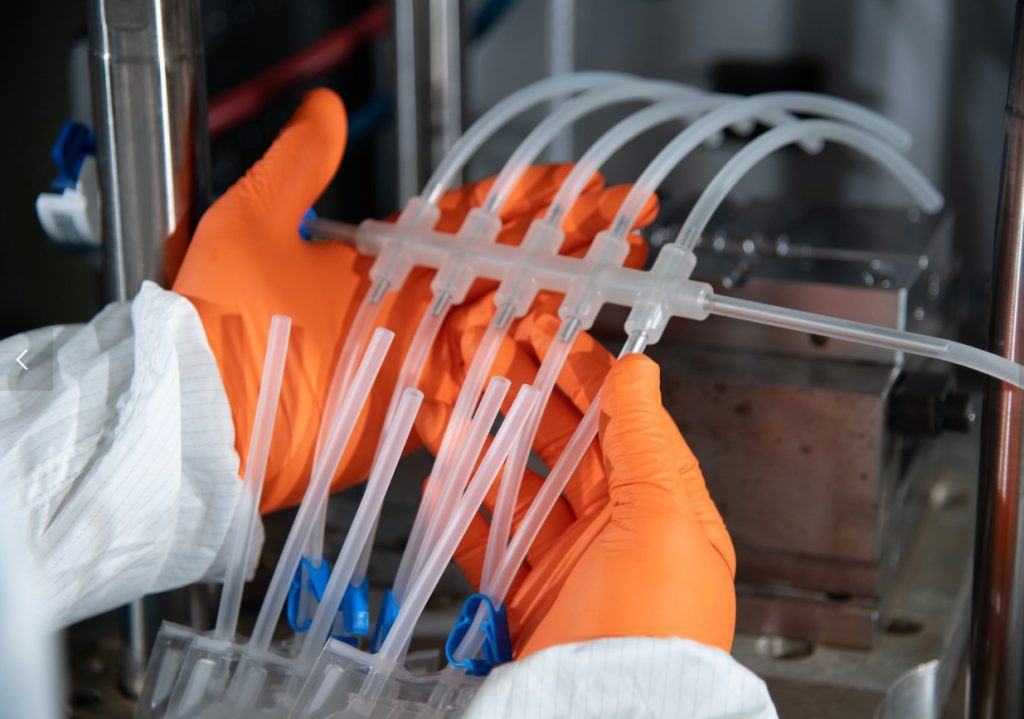
In the rapidly advancing biopharmaceutical and cell therapy industries, the importance of reliable and efficient connection systems cannot be overstated. Traditionally, cable tie connections on barbed connectors have been a mainstay in these sectors. However, as technology and industry needs evolve, overmolded connections are emerging as a superior alternative. Here’s why overmolded connections are becoming the preferred choice in these critical fields.
- Enhanced Sterility
One of the foremost advantages of overmolded connections is the significant improvement in sterility. In biopharmaceutical and cell therapy applications, maintaining an aseptic environment is crucial to prevent contamination and ensure the integrity of the products. Overmolded connections provide a seamless and enclosed interface that minimizes potential contamination points, unlike cable tie connections that can harbor bacteria and particulates in the gaps and crevices around the ties and barbs. Additionally, the smooth surfaces of overmolded connections are easier to clean and sterilize, further enhancing the sterility of the system.
- Improved Mechanical Integrity
Overmolded connections offer superior mechanical strength and durability compared to traditional cable tie connections. The integrated molding process ensures a robust and reliable bond between the tubing and the connector, reducing the risk of leaks and disconnections under various stress conditions. This increased mechanical integrity is vital in biopharmaceutical processes, where consistent and reliable fluid transfer is essential for the production of high-quality therapeutic products.
- Streamlined Installation and Reduced Human Error
The installation process for overmolded connections is simpler and more foolproof than that for cable tie connections. Overmolding eliminates the need for manually securing ties, which can be time-consuming and prone to inconsistencies. This not only speeds up the assembly process but also reduces the risk of human error, ensuring more uniform and reliable connections. In a field where precision and repeatability are critical, this can lead to significant improvements in operational efficiency and product consistency.
- Enhanced Aesthetic and Functional Design
Overmolded connections provide a clean and professional appearance, which is particularly important in regulated environments like biopharmaceutical manufacturing and cell therapy labs. The integrated design eliminates the bulky and sometimes unsightly cable ties, creating a more streamlined and organized system. This not only improves the aesthetic appeal but also facilitates easier visual inspection and maintenance, contributing to a more efficient and effective work environment.
- Customization and Flexibility
Overmolding technology allows for a high degree of customization to meet specific application requirements. Materials can be selected to optimize chemical resistance, flexibility, and compatibility with various fluids used in biopharmaceutical processes. This flexibility ensures that the connections can be tailored to handle the unique demands of different applications, from cell culture and fermentation to downstream purification and final fill/finish operations.
- Cost Efficiency and Long-term Savings
While the initial cost of overmolded connections may be higher than that of cable tie connections, the long-term benefits often outweigh the upfront investment. The improved durability and reliability reduce the need for frequent replacements and maintenance, leading to lower overall costs. Additionally, the reduced risk of contamination and product loss can result in significant savings, especially in high-value biopharmaceutical and cell therapy applications.
Conclusion
In the biopharmaceutical and cell therapy space, where precision, sterility, and reliability are paramount, overmolded connections offer numerous advantages over traditional cable tie connections on barbed connectors. From enhanced sterility and mechanical integrity to streamlined installation and long-term cost savings, overmolded connections are setting a new standard for connection technology in these critical industries. By adopting overmolded connections, companies can improve their operational efficiency, product quality, and overall competitiveness in the market.
